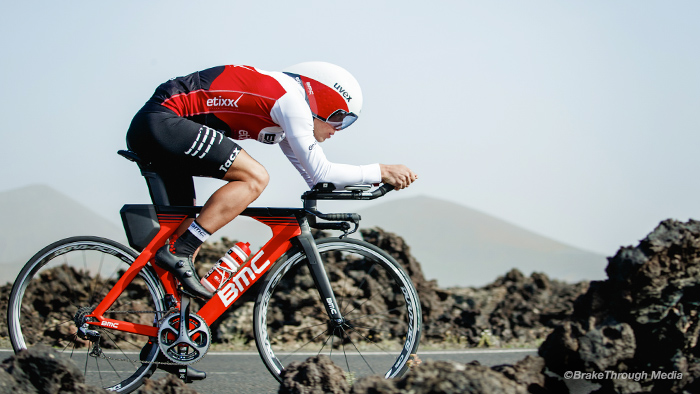Performance assessment or field testing is a simple way to evaluate your current performance level. There are a variety of tests you can employ as a cyclist and/or multisport athlete and they offer three distinct benefits. First, you can use the data to develop training zones based on lactate threshold heart rate (LTHR), functional threshold power (FTP) and pace. Second, you can accurately determine your current fitness level. Third, you can evaluate the effectiveness of your current training regimen. Let’s begin with three cycling field tests:
Cycling Performance Assessment
The 30-minute time trial
This test is simple. After a good warm-up, ride as hard as you possibly can for 30 minutes. Your heart rate for the last 20 minutes of this effort is a close estimate of your lactate threshold heart rate (LTHR). Your average power for 30 minutes is a close estimate of your functional threshold power (FTP).
The 20-minute time trial
In their book, Training and Racing with a Power Meter, Hunter Allen and Andy Coggan, PhD proffer a shorter time trial effort. To perform this test, start with a thorough warm-up, then ride as hard as possible for 20 minutes. Your average power for this ride is approximately 95 percent of FTP. For example, if your observed average power is 240 watts, your estimated FTP is 228 watts.
Two 8-minute time trials
In The Time-Crunched Cyclist, Chris Carmichael and Jim Rutberg offer an even shorter field test. Once again, you perform a thorough warm-up, then ride as hard as possible for eight minutes. Spin easy for 10 minutes and then do another all-out eight-minute effort. The average power for the higher of your two efforts is approximately 90 percent of FTP. For example, if your observed average power is 280 watts for the second eight-minute time trial (in this case, the higher of the two, eight-minute hard efforts), estimated FTP is 252 watts.
Whichever field test you choose, there are four ways you can evaluate your cycling field tests:
- Look for an increase in your functional threshold power throughout the year.
- Look for an increase in your LTHR in the 30-minute time trial.
- Measure the distance covered in the 20- or 30-minute time trials and look for increases over the course of a season (using an indoor trainer helps reduce potential error).
- Base your field test on distance (e.g., 10 miles) and look for decreases in the time it takes you to cover that distance (once again, using an indoor trainer reduces the effect of terrain, weather and other factors that introduce error).
Running Performance Assessment
The 30-minute time trial
This is identical to the cycling field test except you don’t ride a bike! After a thorough warm-up, run as hard as possible for 30 minutes. Your average heart rate for the last 20 minutes of the time trial will be a close estimate of LTHR.
The three-mile field test
In her book, Training Plans for Multisport Athletes, Gale Bernhardt recommends the three-mile field test for runners. After a good warm-up, run as hard as possible for three miles. Your average heart rate for the test is approximately 101 percent of LTHR. For example, if your average heart rate during the field test is 175 bpm, then your estimated LTHR is 173 (175/1.01 = 173). If a 5K race serves as the field test, then your average heart rate during the race is about 105 percent of LTHR (175/1.05 = 167).
The Cooper 12-minute test
This physical fitness test was designed by Dr. Kenneth Cooper in 1968 to evaluate the physical condition of soldiers in the U.S. military. The goal is to run as far as possible in 12 minutes.
You can evaluate your running field tests in three ways:
- For the 30-minute time trial and Cooper 12-minute tests, look for increases in the distance covered from one test to the next.
- For the three-mile test, look for decreases in the time it takes to complete the test.
- Look for an increase in your LTHR for the 30-minute time trial and three-mile test.
Swimming Performance Assessment
Finally, here are two swimming field tests. Note that these tests do not involve functional threshold power or lactate threshold heart rate but focus on pace.
The one-kilometer time trial
In the Triathlete’s Training Bible, Joe Friel proffers the 1K TT. As with the cycling and running field tests, it is very important to begin with a good warm-up. Then swim as hard as possible for 1,000 meters. Use the time it takes to complete the test to determine a swim pace per 100 meters. For example, if you swim 1K in 18:30, your pace per 100 meters is 1:51. You can use this data to create workouts.
The 100-meter time trial
In her book, Gale Bernhardt suggests the 100-meter TT. After a thorough warm-up, perform 3 x 100 meter intervals as fast as possible, but with an emphasis on consistency from one hard effort to the next. Recover for 20 seconds between intervals. Your 100-meter training pace is the average of the three hard efforts. For example, three efforts of 1:30, 1:32 and 1:34 would yield a training pace of 1:32.
Evaluating your swimming field tests is simple. For both the 1,000 and 100-meter distances, look for decreases in the time it takes you to complete the test (i.e., decreases in identified training pace).




